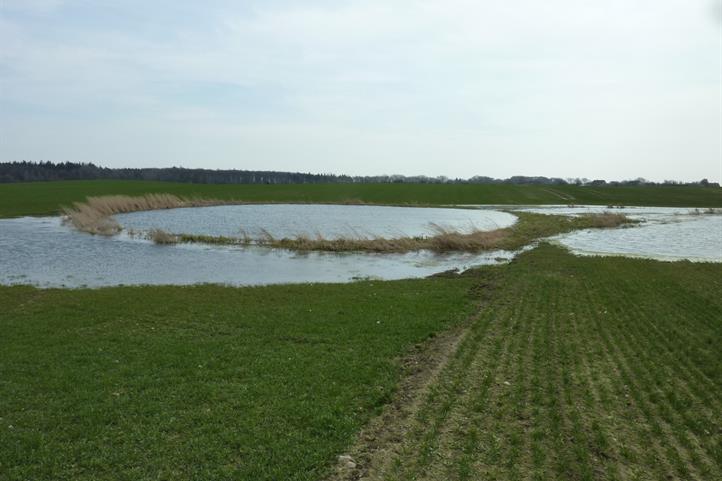20.02.2019
In February 2019, the Integrated Priority Project (IPP) “Small Water Bodies in an agricultural landscape: Ecosystem services of spatial and temporal within-field transition zones (SWBTrans)” was launched at the Leibniz Centre for Agricultural Landscape Research (ZALF). It will fill knowledge gaps about the “Smart Use of Heterogeneities of Agricultural Landscapes”, one of the ZALF’s focal topics. The three-year project is funded by the ZALF budget and combines the expertise of four working groups.
Smart use of agricultural landscapes must account for spatial and temporal heterogeneities in order to achieve high resource use efficiency and yields while at the same time mitigating ecosystem disservices and optimizing provision of ecosystem services. This is particularly relevant for the intensive agricultural used landscapes that are coined with numerous small standing water bodies (SWB), called potholes in North America or kettle holes in Europe. Kettle holes are regarded as hot spots of biodiversity and biogeochemistry, and are of high aesthetical attractiveness in monotonic agricultural landscapes. They provide a place of refuge for many animal species and act as paleobotanical and –zoological treasure. From an agricultural management perspective, however, within-field kettle holes are often considered as obstacles of modern crop production with large machinery. Because of microclimatic conditions (oasis effects) kettle holes could enhance microbial and fungi spread and thus increase the infestation risk of adjacent fields. Furthermore, kettle holes that occasionally overflow into adjacent fields may damage crops and impede subsequent management. While single ecosystem services of kettle holes within arable fields have been studied before, integrated assessments of various positive and negative effects are still missing that systematically determine and balance the range of single effects. Particularly systematic analyses of ecosystem services and disservices of occasionally overflowing and drying up of kettle holes within arable fields, a special type of aquatic-terrestrial interface, have not yet been studied so far. The project will be carried out in the AgroScapeLab Quillow of ZALF. It is situated in the Pleistocene younger moraine landscape of Northeast Germany which contains countless kettle holes. The region is dominated by agricultural use and characterized by a hummocky landscape with gently rolling hills and closed depressions in which kettle holes developed. The project combines hydrological investigations of water and soil moisture dynamics of kettle holes inclusive transition zones, with microbiological investigations concerning the fungi spread, and habitat characteristics of the aquatic-terrestrial transition zones. They will be accompanied by an impact assessment. The investigations will produce information that facilitates a sustainable ecosystem and land use management for these sites.
Pictures
For downloading the pictures please click on a picture and use the icon.


Flooded kettle hole in Rittgarten (Uckermark): Quelle: © SWB.
